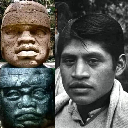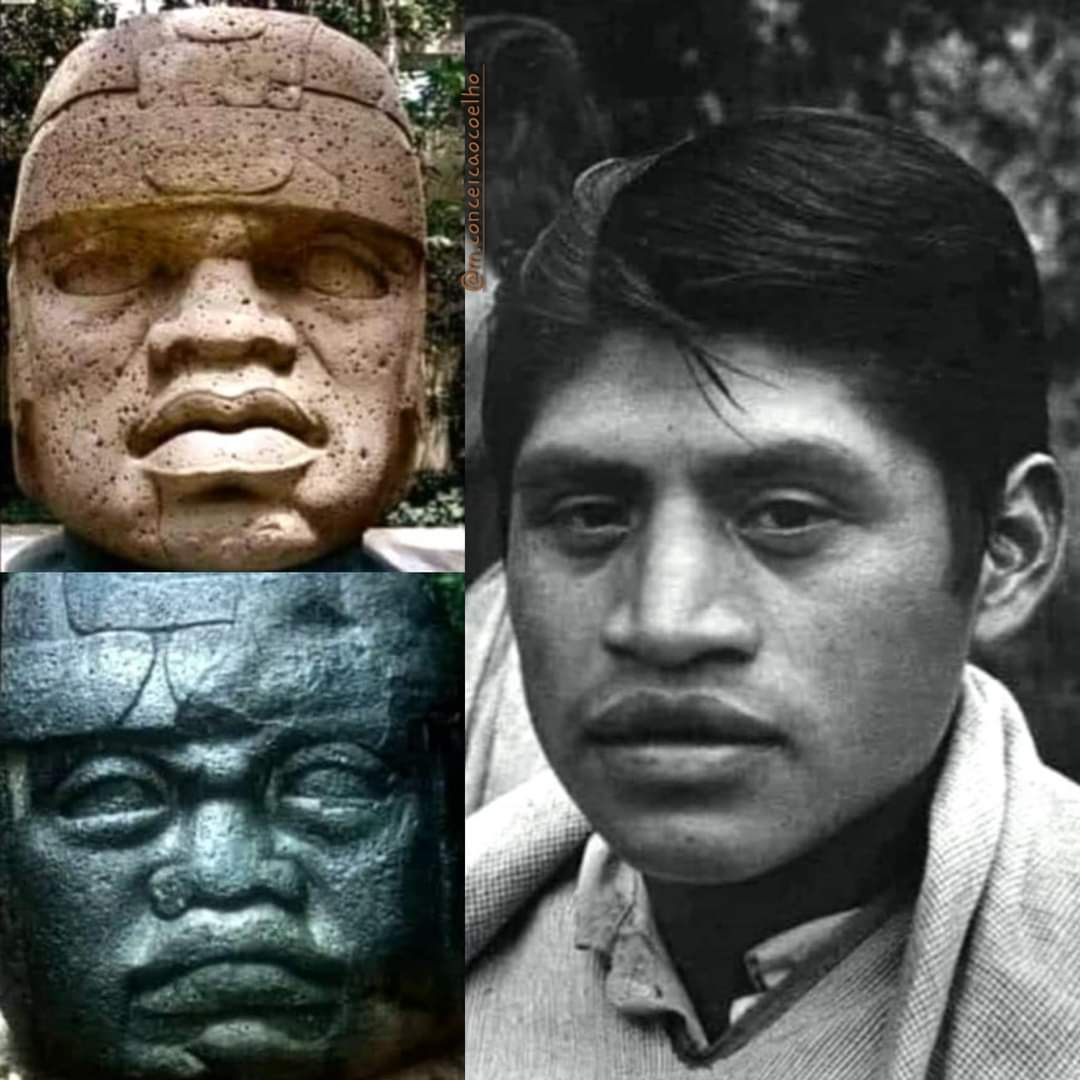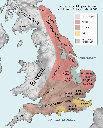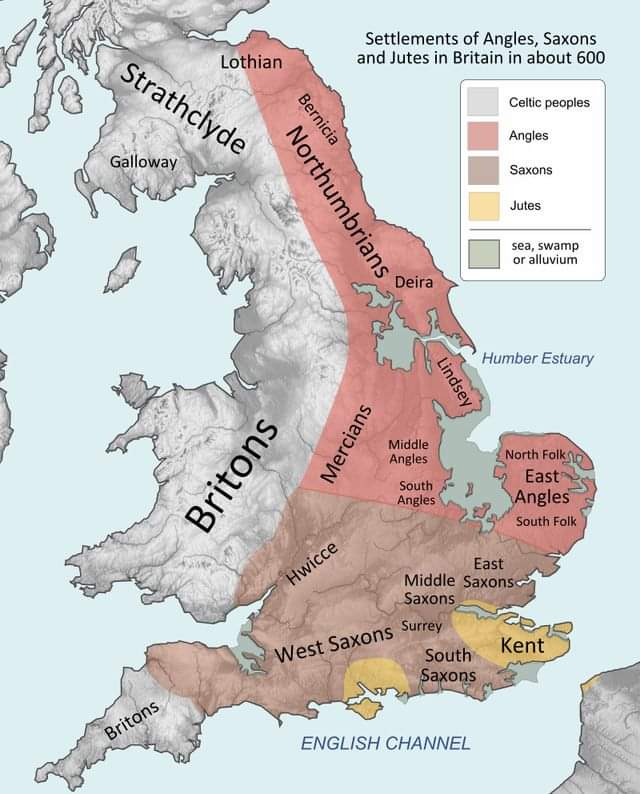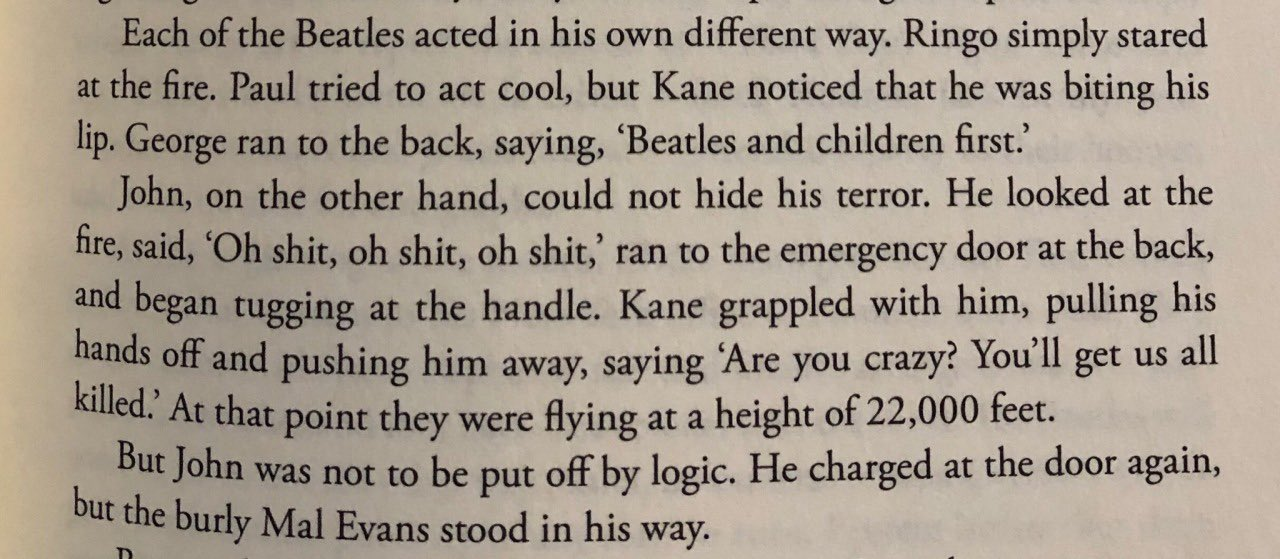-
The earliest Americans arrived in the New World 30,000 years ago
www.ox.ac.uk The earliest Americans arrived in the New World 30,000 years ago | University of OxfordPeople travelled by boat to North America some 30,000 years ago, at a time when giant animals still roamed the continent and long before it was thought the earliest arrivals had made the crossing from Asia, archaeological research reveals today.
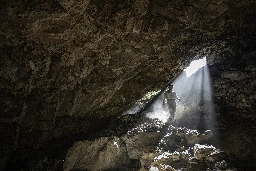
- www.mercurynews.com Today in History: September 3, automobile driven more than 300 mph for first time
Sir Malcolm Campbell became the first person to drive an automobile more than 300 miles-per-hour, speeding across the Bonneville Salt Flats in Utah.

-
The Most Dramatic Legal Defence Ever | Tales From the Bottle

YouTube Video
Click to view this content.
Lawyer who shot himself (by accident) while trying to proof someones innocence
-
Robert Ford, a British radio operator in free Tibet, died on September 20th, 2013, aged 90
AMONG the other officials of the Tibetan government, he stood out somewhat. No silk robes; no long plait; no five-inch earrings. Instead, short back’n’sides, and a business suit in which it was difficult to bow, sit cross-legged, or mount a horse. In the street people stared at his fair hair, and Tibetan friends refused to use his shampoo in case they, too, came to look like that.
Robert Ford was hired by the Tibetans in 1948 to create a modern communications network: more modern, that is, than treks by mule over the highest mountains in the world. His brief, bestowed with the Dalai Lama’s blessing, was to put the eastern stronghold of Chamdo in touch with the capital, Lhasa—and Tibet in touch with the outside world. Incidentally, he would help Tibet survive as a free country in the face of Chinese incursions. To Tibetans he was “Phodo Kusho” (Ford Esquire). The Chinese, when they caught him, called him an imperialist spy.
His life in Chamdo was fascinating, but hard. He learned to tolerate countless cups of butter-tea, as well as the lethal chang beer. A letter home would take five weeks to arrive, and even a message to Lhasa 15 days. But ham radio gave him friends round the world—including, by happy chance, a tailor in his home town of Burton-on-Trent. Conditions permitting, he could talk to his parents every Wednesday. Training Tibetans to understand radio was harder. Ordinary folk would search for the man in the box; high officials would bow to the microphone and present it with white scarves. There were very few clocks in Chamdo with which to fix two-way conversations. Instead, he had to time his broadcasts by the position of the sun.
As the Chinese army advanced in 1950, he was asked to put prayer flags on his aerial masts. Against Chinese machineguns and artillery, the Tibetans relied almost entirely on the gods. Aeroplanes were feared, because they might disturb the spirits of the upper air. Mr Ford took part in what ceremonies he could, but never felt he fitted into that religious scene. He was not only the loneliest Briton in the world but also, he wrote, the loneliest Christian.
In October 1950, Chamdo fell. Phodo Kusho could have escaped the country, but adventure was what he had gone to Tibet to find—not having found it with motorbikes, or in his job as a radio instructor for the RAF, or even in his 1943 posting to India. Besides, he felt unable to abandon his Tibetan staff and friends. At least the outside world should know that Tibet had not meekly surrendered. He made for Lhasa by riding over a precipitous 15,000-feet pass, mostly in the dark; only to find that, on the other side, the Chinese were waiting for him. He was imprisoned, enduring countless interrogations, for five years.
His captors were convinced he had poisoned the Geda Lama, a Tibetan priest with close ties to the Chinese. Mr Ford had in fact refused to treat him, though he was the best doctor in Chamdo, having learned first aid in the Boy Scouts; by contrast, the best the medical monks could do was recommend use of the Dalai Lama’s urine.
As well as that, his radio activities convinced the Chinese he was a spy; which he was not. How would Britain react, they demanded, if the Chinese sent someone to foment separatism in Wales? And what was the meaning of cryptic messages in his logs such as SRI OM CONDK PR? “Sorry old man, conditions poor,” he tried to explain. “Nonsense! How do you spell ‘sorry’?” snapped his interrogator.
The Chinese did not kill him. Instead, they tried to make him a Communist true believer by relentless psychological torture. His imprisonment grew harsher, until it was solitary confinement in a room under a staircase, overrun with rats. Threats of violence accelerated, until every morning he woke wondering whether this was the day on which he would be shot. Gradually, he resolved that only a confession (albeit phoney and partial) would save his life and sanity. He schooled himself in Maoist jargon, glibly denouncing imperialism, practising self-criticism and confessing to thought-crimes—all while displaying “truthfulness, dogmatic conformity and, above all, sincerity”. After four years he was allowed to write to his parents, who had feared he was dead. A year later he was considered reformed, and was deported to Hong Kong. Everest, he learned then, had been climbed—but “by a handful of brave individuals, not because a Party was glorious or a Chairman great”. Slowly, he began to decontaminate his mind all over again.
After retiring from Britain’s foreign service, he became an outspoken advocate for Tibet. As the years went by, his status grew: as the only surviving Westerner with first-hand knowledge of the country before the Chinese invasion, he was well placed to rebut the occupiers’ propaganda. Yes, China had probably raised living standards. Yes, progress in the old Tibet had been slow. But “a healthy well-fed robot is a poor substitute for a human being.”
His friend, the present Dalai Lama, led the mourning for his death. A few months earlier, one of the only foreigners the Tibetan government had ever employed received the country’s highest honour, the Light of Truth award—and also the last of his salary, a 100-srang note, still owing to him from before his arrest.
- news.sky.com The curious tale of Kamala Harris and the Irish slave owner
The US presidential candidate is believed to have links to a town in County Antrim but whereas transatlantic ties are normally a cause for celebration, in the town of Ballymoney there is a strange unwillingness to embrace its most famous daughter.

Five years ago, Donald J Harris, father of Kamala Harris, revealed his belief that he is descended from Hamilton Brown, born in Ballymoney around 1776. Brown emigrated to Jamaica and ran sugar plantations. He owned scores of slaves, some treated harshly.
In an essay by Harris, published by the Jamaica Global Online website, the Stanford University professor wrote: "My roots go back, within my lifetime, to my paternal grandmother Miss Chrishy (nee Christiana Brown, descendant of Hamilton Brown who is on record as plantation and slave owner and founder of Brown’s Town)." Donald J Harris emigrated to the US from Jamaica in 1961.
That story has been given fresh impetus since Joe Biden paved the way for Kamala Harris to become the Democratic presidential candidate. In recent weeks, a County Antrim historian said he had found documentation shedding further light on Hamilton Brown.
Stephen McCracken told the local newspaper, the Ballymoney Chronicle, that he had discovered letters connecting Brown to his birthplace in Bracough, a townland just outside Ballymoney. He told the newspaper that Brown was "a seriously bad man, who travelled to London a few times to campaign against the abolition of slavery".
The Irish Times picked up on the story, as did the Belfast Telegraph and the Daily Mail.
"I've been getting a wee bit of abuse over it," McCracken told the Irish Times. "People have been asking me why I've publicised it."
When I asked him for an interview, he declined, citing an abusive backlash via social media, including Kamala Harris supporters accusing him of trying to wreck her campaign.
Right-wing and pro-Trump memes have circulated since 2019, painting the Harris family as "descended from slave owners", without any context. These tropes deliberately ignore the ugly explanation that slave owners commonly raped their female slaves, explaining why many black Jamaicans have European genes.
In the ultra-polarised world of American politics, Kamala supporters were allegedly hitting out at those publicising her heritage, seeing it as ammunition for further MAGA propaganda.
Meanwhile, the Ballymoney Chronicle carried a follow-up piece practically debunking the original claim of lineage. A qualified genealogist told the paper that the links were "unproven", and said Hamilton Brown was not recorded as getting married or having children.
When I asked that genealogist for an interview - they agreed. The next day they abruptly cancelled, calling the story "a pile of nonsense".
I asked McCracken for further details of his research. He stopped replying.
A third historian told me he didn't think existing documentation would ever prove the link. "You'd need DNA testing," he said.
I felt like I was encountering a wall of silence from others in Ballymoney. Multiple phone calls, messages and emails to a high-profile local DUP councillor went unanswered. A Sinn Fein colleague seemed unaware of the story and not overly interested in an interview. Ballymoney business owners declined to arrange interviews, or were not returning calls.
Repeated attempts to visit Ballymoney were abandoned due to rioting in Belfast. Another journey was aborted after the Sky News satellite van suffered a blow-out on a particularly inhospitable stretch of road.
The story was starting to feel a bit cursed.
...
You can’t visit the "Barack Obama Plaza" motorway service station outside Moneygall, Co Offaly, without a sense of the faintly ridiculous Irish enthusiasm for presidential heritage. Petrol and a chicken fillet roll downstairs, Obama visitor centre upstairs.
Yet, half a decade on from Donald J Harris’s revelation, there isn’t a solitary sign of the transatlantic connection in Ballymoney. Not a mural, a sign, a US flag or an enterprising cafe with a Kamala-themed name.
But some locals were happy to talk.
In the W & J Walker hardware shop, paint brushes from both the "Hamilton" and "Harris" brands hung serendipitously side-by-side.
"People around here like family trees," said worker Joanne Donnell. "They like to go back to the original people."
"It’ll bring a bit of excitement to the town," her sister Rhonda Lafferty said. "We get a lot of visitors here from America, this summer especially."
Neither woman seemed concerned that Hamilton Brown was a slave owner. "People take these things with a pinch of salt," said Joanne. "It was a long time ago."
Winifred Mellot owns the bustling The Winsome Lady clothes shop. A popular figure, she is also the long-serving president of the Ballymoney Chamber of Commerce. She doesn't think Brown's slave-owning past should sour any future celebrations.
- germaniamint.com History of Germania - Germania Mint
We are Germania Mint. Yes, we know – a strange name for a company from Poland, but only seemingly… Historically, the name Germania was given by the ancient Romans to the land north of the Roman Empire. These areas were inhabited by Germans, as well as other non-Germanic peoples, including the Slavs…...

- www.yahoo.com On this day in history, August 24, 1932, Amelia Earhart becomes first woman to fly solo coast-to-coast
On this day in history, Aug. 24, 1932, Amelia Earhart flew solo across the U.S. nonstop — becoming the first woman to do so. Here are details about her remarkable flight and its aftermath.
-
What Ancient DNA Can Tell Us About the Settlement of Vanuatu
www.atlasobscura.com What Ancient DNA Can Tell Us About the Settlement of Vanuatu - Atlas ObscuraAround 3,000 years ago, humans came to shore on the archipelago of Vanuatu for the first time. An ancient seafaring people spilled out of their boats and...

-
Today, August 11 in history
allthatsinteresting.com August 11From the arrest of the "Poughkeepsie Killer" in 1998 to the death of Robin Williams in 2014, here's what happened on this day.

- www.fox32chicago.com Chicago marks 20 years since Dave Matthews Band’s infamous bridge incident
Thursday marks exactly 20 years since one of the most revolting moments in Chicago music history.

- www.theguardian.com Oldest known picture story is a 51,000-year-old Indonesian cave painting
Picture story featuring human-animal hybrids found in Indonesia is believed to be at least 51,200 years old

The world’s oldest known picture story is a cave painting almost 6,000 years older than the previous record holder, found about 10km away on the same island in Indonesia, an international team of archaeologists has said.
The painting, believed to be at least 51,200 years old, was found at Leang Karampuang cave on the east Indonesian island of Sulawesi, researchers from Griffith University, Southern Cross University and the Indonesian National Research and Innovation Agency wrote in the journal Nature.
Samples were collected in 2017, but weren’t dated until earlier this year.
The previous record holder was a lifesize picture of a wild pig believed to be created at least 45,500 years ago in a cave at Leang Tedongnge.
The recently discovered painting is of three therianthropes – or human-animal hybrids – and a wild pig.
- catalog.obitel-minsk.com “If You Want to Hang Me, Here’s the Rope!” — Orthodox Bishop Unafraid of the Nazis Saved Thousands
Choosing between good and evil is easy. Choosing between a greater evil and a lesser one is a more difficult task, especially if it is not immediately apparent which is which. Imagine being offered a

This topic arose more than once in the communication of the Archbishop with the Nazis. In 1943, he stood up against the planned genocide of the Athenian Jewish community and was threatened with a shooting. The Primate replied, “The Greek hierarchs are not shot. They are hanged. Please respect this tradition.”
The Archbishop continued to harshly denounce the invaders in his sermons. Once the head of the collaborationist government Georgios Tsolakoglou told him, “Be careful, or the Germans will shoot you.” Again, His Eminence Damaskinos said, “It is the military who are shot. The hierarchs are hanged, and I am ready for it.”
- biblereadingarcheology.com Sennacherib’s Invasion of Judah
From the ruins of Lachish to Hezekiah’s tunnel in Jerusalem, there are a number of archeological reminders of King Sennacherib of Assyria’s invasion of the kingdom of Judah. That the As…

- arstechnica.com Ancient Maya DNA shows male kids were sacrificed in pairs at Chichén Itzá
Twins play an auspicious role in Maya mythology, most notably in the Popol Vuh.
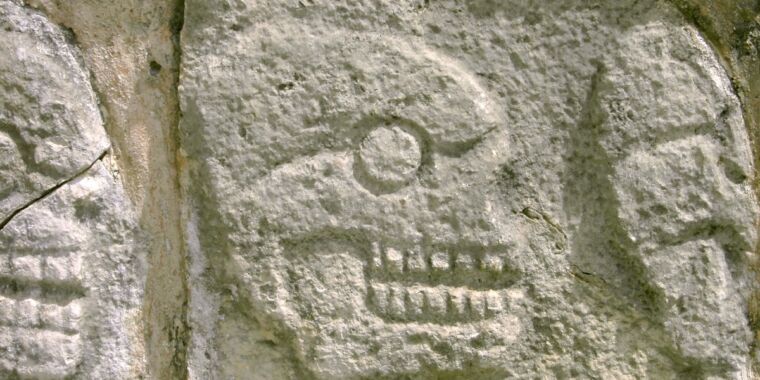
Inhabitants of the ancient Maya city of Chichén Itzá are well-known for their practice of ritual human sacrifice. The most prevalent notion in the popular imagination is that of young Maya women being flung alive into sink holes as offerings to the gods. Details about the cultural context for these sacrifices remain fuzzy, so scientists conduced genetic analysis on ancient remains of some of the sacrificial victims to learn more. That analysis confirmed the prevalence of male sacrifices, according to a new paper published in the journal Nature, often of related children (ages 6 to 12) from the same household—including two pairs of identical twins.
Chichén Itzá ("at the mouth of the well of the Itzá") is located in Mexico's eastern Yucatán. It was one of the largest of the Maya cities, quite possibly one of the mythical capital cities (Tollans) that are frequently mentioned in Mesoamerican literature. It's known for its incredible monumental architecture, such as the Temple of Kukulcán ("El Castillo"), a step pyramid honoring a feathered serpent deity. Around the spring and fall equinoxes, there is a distinctive light-and-shadow effect that creates the illusion of a serpent slithering down the staircase. There is also a well-known acoustical effect: clap your hands at the base of the staircases and you'll get an echo that sounds eerily like a bird's chirp—perhaps mimicking the quetzal, a brightly colored exotic bird native to the region and prized for its long, resplendent tail feathers.
The Great Ball Court (one of 13 at the site) is essentially a whispering gallery: even though it is 545 feet long and 225 feet wide, a whisper at one end can be heard clearly at the other. The court features slanted benches with sculpted panels depicting aspects of Maya ball games—which were not just athletic events but also religious ones that often involved ritual sacrifices of players by decapitation.
"Evidence of ritual killing is extensive throughout the site of Chichén Itzá and includes both the physical remains of sacrificed individuals as well as representations in monumental art," the authors of the new Nature paper wrote. Decapitation was just one method of sacrifice favored by the Maya over various historical periods. The Maya were equally fond of cutting out the still-beating hearts of victims, accessing the organ either from below the diaphragm or through the sternum. There were also rituals that involved binding victims to a stake and shooting arrows at a white target painted on the heart.
The site features underground rivers with natural sinkholes, called cenotes, providing water to the local inhabitants. One of those is known as the Cenote Sagrado ("Sacred Cenote"), or the Well of Sacrifice, some 200 feet (60 meters) wide and surrounded by sheer cliffs. As its name implies, the Maya would regularly sacrifice valuable objects and the occasional human by tossing them into the sinkhole to appease the Maya rain god, Chaac. (If the 89-foot (27-meter) fall didn't kill them, drowning would.)
-
Indian historians have documented as many as 40,000 temples that have been destroyed
www.stabroeknews.com Indian historians have documented as many as 40,000 temples that have been destroyed - Stabroek NewsDear Editor, I refer to the Reuters mischievous article, “India Hindu group toughens stance on mosque-temple disputes,” published in the Stabroek News,

I refer to the Reuters mischievous article, “India Hindu group toughens stance on mosque-temple disputes,” published in the Stabroek News, (28/1/2024). The article makes mention of the “razing of the Ayodhya mosque,” as the BBC, New York Times, The Washington Post, CNN, and Al Jazeera have done, without any reference to the fact, as established by the Archaeological Survey of India and accepted by the Supreme Court of India in its 2019 judgment, that the mosque was built over a huge temple.
The article further goes on to say that, “Hindu groups have for decades said that Muslim Moghul rulers built monuments and places of worship after destroying ancient Hindu structures.” This is not just a claim. The evidence for the Hindu position is evident to the naked eyes in hundreds of cases, especially in northern India where Moghul (Mongol) religious persecution – of Hindus, Buddhists, and Jains – was most intense, a persecution boastfully documented in memoirs of several Moghul rulers themselves. For example, walking around the Gyanvapi Mosque – an interesting Sanskrit name for a mosque – one can see evidence of Hindu architecture. Interesting also to note is that a mere wall separates the famous Kashi Vishwanath Mandir from the mosque.
The razing of indigenous places of worship and other institutions and superimposing on them places of worship belonging to invading and conquering armies is not something peculiar to India. Historical evidence is replete with examples in Europe where the religious landscape is littered with pre-Christian pagan monuments that were either destroyed or converted into Christian churches and cathedrals. The best, living examples of this destruction or as some Christian sources euphemistically say “conversion” can be seen in Rome and Greece.
Wikipedia is not peer-reviewed academic research, but it does make reference to something that is universally and indisputably known when it says, “Eventually the prime sites of the pagan temples were very often occupied for churches, the church of Santa Maria sopra Minerva, literally “Saint Mary above Minerva” in Rome, Christianised about 750, being simply the most obvious example. The Basilica of Junius Bassus was made a church in the late fifth century.”
The same article tells us that in Greece, “the occupation of pagan sites by Christian monasteries and churches was ubiquitous.”
On the other hand, with the rise of Islam, the first casualty was the Ka’aba itself which was once sacred to Arabian pagans and polytheists. When Jerusalem was captured the Dome of the Rock was built on the Temple Mount on which could be found the Jewish Temple. Later came the Al Aqsa Mosque. However it was in Europe that the systematic conversion of churches into mosques reached a frenzy. Alphabetically, Wikipedia lists Albania, Bosnia and Herzegovina, and Cyprus where as late as 1974 following the Turkish invasion “church-to-mosque conversion” reached a peak. In Greece, there are scores of examples of this conversion. Many other European countries suffered the same fate.
Of course, the most recent example of this takeover is the Hagia Sophia in Istanbul, formerly Constantinople. Built as a cathedral as early as 537 CE in Constantinople it was converted sometime in the mid-15th century into a mosque and remained so until 1935 when it was made into a museum. In 2020, the Turkish government declared it once again to be a mosque. All Pope Francis could do was to express “regret.” After all, Christianity was guilty of the same iconoclastic sin.
- www.thenationalnews.com 4,000-year-old skulls suggest ancient Egyptians tried to treat cancer with surgery
Study describes earliest known surgical procedure related to a cancerous tumour

Ancient Egyptians may have tried to treat cancer with surgery, according to a new study that has uncovered the earliest known evidence of a procedure for the disease.
Texts dating back thousands of years describe ancient Egyptians’ advanced knowledge of medicine, including identifying and treating numerous diseases and traumatic injuries, using prostheses and dental fillings.
But it was not believed that they knew how to treat cancer, until now.
Studying ancient skulls, scientists discovered cut marks around cancerous lesions – appearing to provide evidence of experimental treatments or medical explorations of the disease.
Lead author Prof Edgard Camaros from the University of Santiago de Compostela, in Spain, told The National that the team’s research “changes our understanding of the history of medicine”.
“This is the earliest known, at least for the moment, surgical procedure related to a cancerous tumour,” he said.
“Was it a treatment or a postmortem intervention? We cannot tell, but clearly they were trying to deal with it.”
Researchers made the discovery as part of efforts to understand more about the role of cancer in the past and how prevalent it was in ancient societies.
They studied two Egyptian skulls in the University of Cambridge’s Duckworth Collection. One, from between 2687 and 2345BC, belonged to a male aged 30 to 35. The other, from between 663 and 343BC, belonged to a female who was older than 50 years.
The man’s skull showed evidence of a large lesion consistent with excessive tissue destruction, a condition known as neoplasm. There were also 30 or so small and round metastasised lesions scattered across the skull, with cut marks, which appeared to be from surgery.
-
Battle of Puebla
> The Battle of Puebla took place on 5 May 1862, near the city of Puebla during the French intervention in Mexico. The battle ended in a victory for the Mexican Army over the occupying French forces. The French eventually overran the Mexicans in subsequent battles, but the Mexican victory at Puebla against a much better equipped and larger[1] French army provided a significant morale boost to the Mexican army and also helped slow the French army's advance towards Mexico City. There were a total of 10,540 soldiers in the war. 462 French soldiers died in combat. Only 83 Mexican soldiers died in the battle.
-
When I was at school ...(Accounts of Homosexuality in 20th C. British Schools)
www.theguardian.com When I was at school ...John Peel's autobiography reveals that he was raped at Shrewsbury school in the 1950s. So was his experience typical? We asked seven prominent former public schoolboys to spill their dormitory secrets.

- www.churchpop.com The Earliest Image of Our Lord Jesus Christ Is... Anti-Christian Graffiti?
This actually sort of seems fitting. Ever wondered what Jesus looked like? Unfortunately, we don’t really know. All of the realistic depictions we have of him were made long after his Ascension (and they don’t agree anyway). It also doesn’t help that the earliest depiction we have
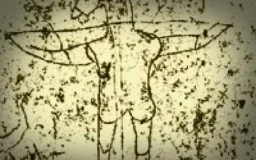
- theconversation.com Children aren’t starting puberty younger, medieval skeletons reveal
The panic about British children reaching puberty younger is unwarranted. Medieval skeletons provide a different answer.

- arkeonews.net Archaeologists Discover 8600-year-old Bread at Çatalhöyük May be the Oldest Bread in the World
Archaeologists have discovered about 8,600-year-old bread at Çatalhöyük, a Neolithic settlement in central Turkey. Çatalhöyük is noteworthy because it is...
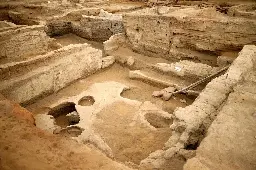
- web.sas.upenn.edu Blood, Lead, and Tears: The Cult of Cybele as a Means of Addressing Ancient Roman Issues of Fertility
Blood, Lead, and Tears: The Cult of Cybele as a Means of Addressing Ancient Roman Issues of Fertility By Jordan Reece Tayeh Divinity has many faces in the Ancient Roman world, none more intriguing …
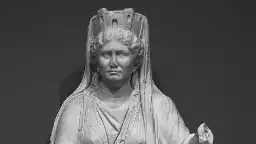
- www.thesun.co.uk Skull towers reveal Aztec sacrifice sites where victims had hearts ripped out
THE discovery of a grisly Aztec ‘skull tower’ has revealed the true scale of human sacrifice in ancient Mexico. Research shows victims had their still-beating hearts ripped from their c…

Large holes were then bored into the sides of the skulls and placed onto a large wooden pole prior to being placed in the tzompantli - a towering rack of skulls in the front of the temple.
Two columns of decorative mortar skulls were placed either side of the real ones to honour the gods and scare off potential enemies.
Paintings and written descriptions from the early colonial period have long documented the macabre site. One historical report claimed one rack contained more than 130,000 real skulls.
- www.newsweek.com Secrets of 600-year-old shipwreck revealed by scientists
It is thought that the medium-sized merchant ship sank after a fire sometime between A.D. 1399 and 1415.

- www.independent.co.uk Everything we know about the potential discovery of Amelia Earhart’s long-lost plane
What happened to the pioneering American pilot, who disappeared over the Pacific in 1937, remains one of the 20th century’s most enduring mysteries

- www.healthline.com When Can a Tooth Infection Kill You?
If left untreated, it’s possible for a tooth infection to lead to serious, life-threatening complications. Find out the symptoms to watch for, and when to seek emergency care.

In London during the 1600s, dental infections were listedTrusted Source as the fifth or sixth leading cause of death. Even up until 1908, dental infections still ended in death between 10 to 40 percent of the time.
Due to advances in medicine and dental hygiene, death from a tooth infection is now extremely rare. However, it’s still important to seek prompt care if you suspect that you have an infected tooth.
When left untreated, a tooth infection can spread to other areas of the body, leading to serious, potentially life-threatening complications, including:
sepsis: a severe reaction by the body in response to the infection Ludwig’s angina: a serious bacterial infection that affects the floor of the mouth, underneath the tongue necrotizing fasciitis: a severe infection that leads to soft tissue death in the body mediastinitis: an inflammation of the mediastinum, which is a space located between your lungs endocarditis: an inflammation of your heart’s inner lining, called the endocardium cavernous sinus thrombosis: a dangerous blood clot of the sinuses, just under the brain and behind the eyes osteomyelitis: a bone tissue infection brain abscess: a collection of pus that can form in the brain
-
Ocomtún: A long-lost Maya city that was just discovered
www.bbc.com A long-lost city found in the AmericasArchaeologist Ivan Šprajc has spent nearly 30 years uncovering long-lost cities buried deep in Mexico's Yucatán Peninsula. His latest discovery is capturing the world's attention.
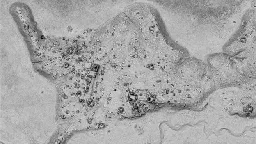
- www.bbc.com The discovery of the Americas' long-lost 'Rome'
The unearthing of an immense network of cities deep in the Ecuadorean Amazon is proving that the world's biggest rainforest was once a thriving cosmopolitan hub.

-
Dancing Mania (14th-17th centuries)
This was a strange little story I found in some old notes:
> Dancing mania (also known as dancing plague, choreomania, St John's Dance and, historically, St. Vitus' Dance) was a social phenomenon that occurred primarily in mainland Europe between the 14th and 17th centuries. It involved groups of people dancing erratically, sometimes thousands at a time. The mania affected men, women, and children, who danced until they collapsed from exhaustion. One of the first major outbreaks was in Aachen, in the Holy Roman Empire, in 1374, and it quickly spread throughout Europe; one particularly notable outbreak occurred in Strasbourg in 1518, also in the Holy Roman Empire.
> Affecting thousands of people across several centuries, dancing mania was not an isolated event, and was well documented in contemporary reports. It was nevertheless poorly understood, and remedies were based on guesswork. Generally, musicians accompanied dancers, to help ward off the mania, but this tactic sometimes backfired by encouraging more to join in. There is no consensus among modern-day scholars as to the cause of dancing mania.[1]
> The several theories proposed range from religious cults being behind the processions to people dancing to relieve themselves of stress and put the poverty of the period out of their minds. It is, however, thought to be as a mass psychogenic illness in which the occurrence of similar physical symptoms, with no known physical cause, affect a large group of people as a form of social influence.[1]
-
Cambrian Chronicles - YouTube
Kind of a specialized history channel about early Welsh history that I find pretty interesting.
-
Whatifalthist - Used to be an alternative history channel, now focuses on what might happen based on history
https://www.youtube.com/@WhatifAltHist
Lots of people don't like his work, but it's one of my favorites, and a few of his videos hugely changed the way I look at the world.
-
Fall of Civilizations Podcast - YouTube
Really interesting channel that does some really long form videos on collapse of empires and civilizations. They do two types of content where some are just audio only and others are actual videos with like reenactments and other visuals.

